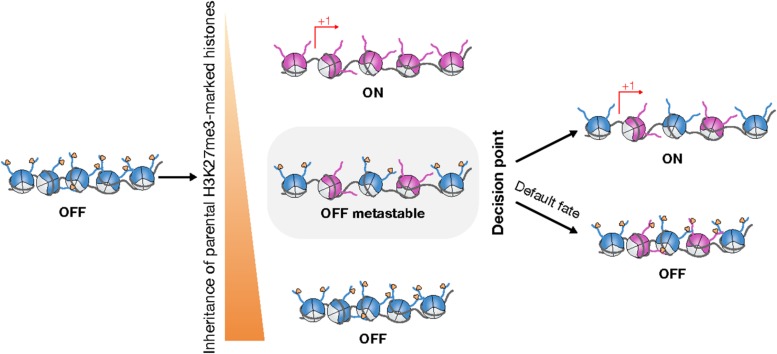FIGURE 3.
Chromatin replication can potentiate cell fate transitions. During chromatin replication, asymmetric inheritance of parental H3K27me3 can lead to transcriptional reactivation in only one daughter cell (Middle, Top, Bottom). In case of symmetric inheritance of parental H3K27me3, repressive chromatin is switched from a stable repressive state to a metastable state that is permissive for epigenetic reprogramming (Middle). By default, H3K27me3 landscapes are restored such that repressive chromatin remains silent (Right, Bottom). Nevertheless, local disruption of the restoration of repressive chromatin can trigger specific changes in gene expression (Right, Top).

